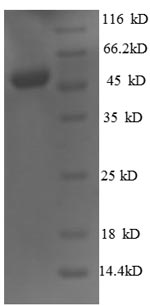Very nice to receive your inquiry. Recombinant human Homeobox protein OTX2
CSB-YP017299HU
CSB-EP017299HU
CSB-BP017299HU
CSB-MP017299HU
Expression Region: 1-297aa, full length of Isoform 2
Tag Info: EP: N-terminal 6xHis-sumo-tag; YP, BP, MP: N-terminal 6xHis-tag
Target Protein Sequence:
MMSYLKQPPYAVNGLSLTTSGMDLLHPSVGYPGPWASCPAATPRKQRRERTTFTRAQLDVLEALFAKTRYPDIFMREEVALKINLPESRVQVWFKNRRAKCRQQQQQQQNGGQNKVRPAKKKTSPAREVSSESGTSGQFTPPSSTSVPTIASSSAPVSIWSPASISPLSDPLSTSSSCMQRSYPMTYTQASGYSQGYAGSTSYFGGMDCGSYLTPMHHQLPGPGATLSPMGTNAVTSHLNQSPASLSTQGYGASSLGFNSTTDCLDYKDQTASWKLNFNADCLDYKDQTSSWKFQVL
We could provide the final product free of imidazole. Please kindly remark this requirement when sending your PO.






